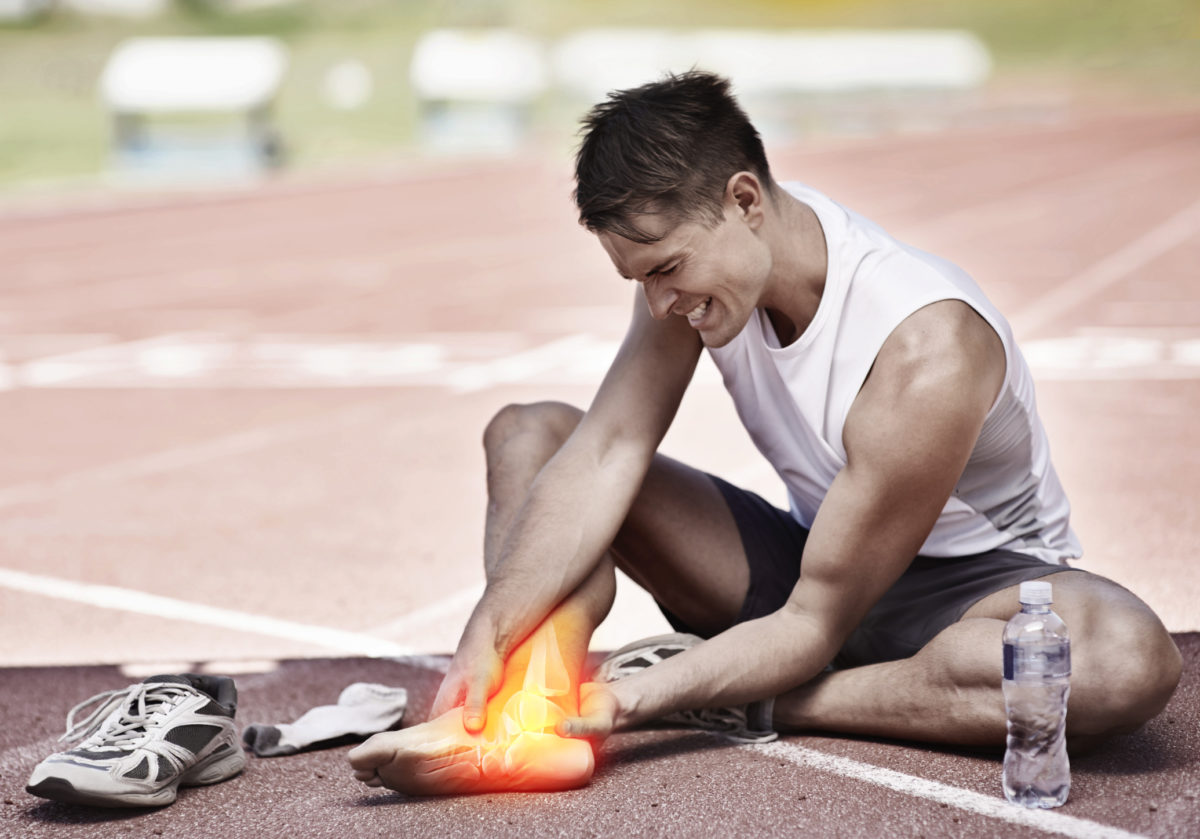
A sports injury is defined as an adverse effect acquired from athletics that results in decreased ability and/or is harmful to performance.19 Physical therapy for athletic injuries are approached differently, depending on the onset and severity of the injury. The easiest way to prevent injury is to know the risk involved with the sport at hand.
Causes of Injury
In sports, there are two main injuries, acute injuries and chronic, or overuse injuries. An acute injury is characterized by a rapid onset or sudden trauma such as a contusion, sprain, strain, or fracture. Most acute sports injuries consist of soft tissue damage and are characterized by pain, swelling, instability, inability to bear full weight, loss of joint motion, and weakness. Overuse injuries are characterized by a slow onset and symptoms are acquired overtime. Examples of overuse injuries are tendonitis (i.e., patella, achilles, bicep), rotator cuff injuries, and impingement. Injuries in sport are caused by a number of factors, either intrinsic or extrinsic. Intrinsic factors resulting in injury may include lack of flexibility, lack of conditioning, psychological factors, and previous injuries. Extrinsic factors include the type/nature of the activity, weather conditions, equipment, and overtraining.
Classifications of Acute Injuries
A sports injury is defined as an adverse effect acquired from athletics that results in decreased ability and/or is harmful to performance.19 The treatment of these injuries are approached differently, depending on the onset and severity of the injury. The easiest way to prevent injury is to know the risk involved with the sport at hand.
- Sprains (injury to ligaments)
- First-degree: mild stretching of ligament, pain, no swelling, mild loss of function
- Second-degree: pain, moderate loss of function, mild/moderate swelling
- Third-degree: complete tear of ligament(s), significant loss of function, lack of stability, severe swelling
- Strains (injury to muscles)
- First-degree: mild damage/stretching of muscle
- Second-degree: moderate stretching of muscle
- Third-degree: torn/ruptured muscle, severe swelling
- Contusions (AKA bruise): a direct blow to the body structure, discoloration due to blood vessel damage, blood enters surrounding tissues
- Fractures: breaks or cracks in the bone. There are four types of fractures;
- Stress fracture
- Closed fracture
- Open fracture
- Salter-Harris fracture
- Dislocations: displacement of contiguous surfaces or bones comprising a joint.
Physical Therapy for Acute Athletic Injuries
Going to Physical therapy for athletic injuries promptly will speed the healing process so you can get back to your favorite sport or recreational pursuit faster. Treatment of acute soft tissue injuries consists of RICE, which stands for Rest, Ice, Compression, and Elevation. RICE is employed for the first two to four days after an injury occurs. The goal of treating the acute injury is to minimize further damage by controlling swelling and protecting the injured joint or muscle.
Rest is important as further activity can cause further tissue destruction. This means stopping the activity and not playing through the injury.
Ice or cold packs should be applied for 15 minutes every hour to two hours to control inflammation. A damp towel between an ice pack and the skin should be used to protect skin from frostbite. If you don’t have a commercial ice pack, a big zip-lock bag full of 50% ice and 50% water works well – double bag to prevent leakage. Also frozen vegetables in a plastic bag work well.
Compress the affected part or joint by wrapping an elastic bandage around the afflicted area. Be careful not to wrap too tightly. Compression will protect the area from further injury and help control swelling.
Elevate the affected body part above the level of the heart while icing and resting. This will also control swelling.
If you feel you have a serious injury see your doctor immediately. Signs of a more serious injury include:
- Visible deformity of a body part.
- Severe pain which prevents the use of an arm or leg.
- Inability to bear any weight through a leg.
- Loss of feeling or numbness and/or tingling.
Prevention of Athletic Injuries
By participating in sports, you are assuming the risk of injury, but here are some common and easy ways to prevent an injury from athletic participation:
- Conduct pre-participation evaluations to identify pre-existing injury risk factors (i.e., allergies, high blood pressure, vision deficits, previous injury).
- Water loss is the biggest risk for active people. If you feel thirsty during activity, you are already 2-3% dehydrated. Dehydration can impair performance and cause muscle cramps, dizziness, excessive fatigue, headaches, and more.21 Drink fluids regularly during sports to prevent these symptoms.
- Stretch before and after workouts, games, or practices to prevent muscle soreness.
- Recognize faulty equipment and dangerous facilities and avoid these situations.
- Educate athletes about hazards and risks involved in the activity.
- Participate in pre-season conditioning.
- Wear proper protective equipment; virtually all sports can benefit from the use of some form of safety equipment (i.e., mouth guards, knee pads, helmet).
Resources
- Hong, J. Ph.D, ATC. (2009). Concepts of Sports Injury. Willamette University
- Hong, J. Ph.D., ATC. (2009). Sports-Injury Prevention. Willamette University.
- Appleton, B. Stretching and Flexibility: How to Stretch. Date accessed 8 Feb
